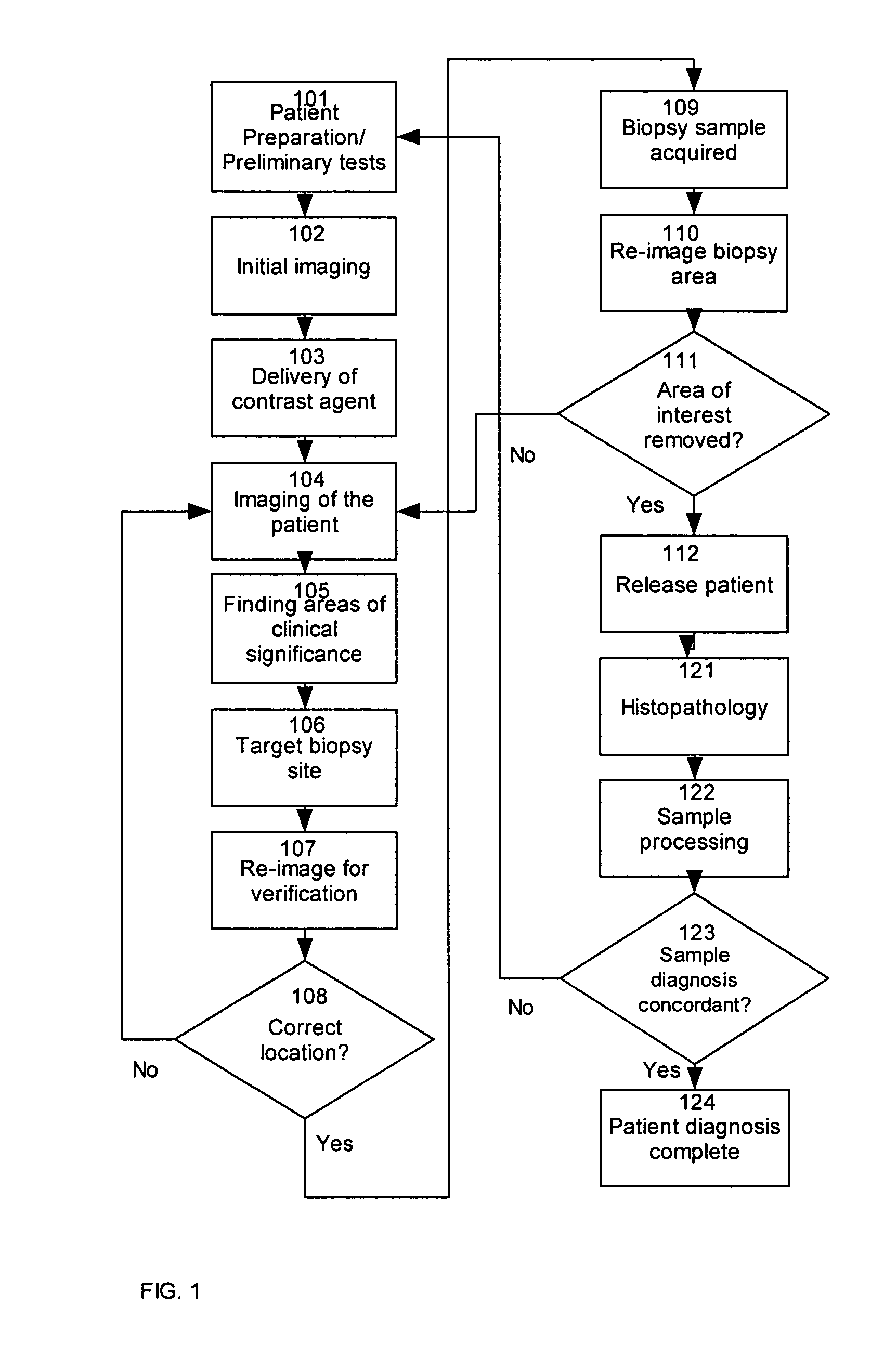Ex vivo verification of biopsy tissue samples
a biopsy tissue and ex vivo technology, applied in the field of biopsy tissue verification, can solve the problems of not easily fitting into standard biopsy procedures, remains a degree of uncertainty as to whether the excised tissue does in fact include part or all, and clinical application of these agents has not yet been realized. , to achieve the effect of improving confidence and improving biopsy accuracy and speed
- Summary
- Abstract
- Description
- Claims
- Application Information
AI Technical Summary
Benefits of technology
Problems solved by technology
Method used
Image
Examples
Embodiment Construction
[0048] A method indicates a likely presence of abnormal tissue within an ex vivo sample of tissue by providing observable agent to a region of interest of a patient; removing from the patient a tissue sample from the region of interest to provide a removed tissue sample; non-destructively or minimally destructively observing the removed tissue samples under conditions that allow observation or detection of the non-destructively observable agent; and evaluating results of the observation or detection of the observable agent within the removed tissue sample. Observation may be by destructive, partially non-destructive or non-destructive techniques, as described herein. The method may evaluate results by assessing a likelihood of the presence of abnormal tissue within a sample or evaluating results to determine whether the removed tissue sample has been taken from the region of interest. After removing the sample, and preferably before or after evaluating results, histopathic examinati...
PUM
 Login to View More
Login to View More Abstract
Description
Claims
Application Information
 Login to View More
Login to View More - R&D
- Intellectual Property
- Life Sciences
- Materials
- Tech Scout
- Unparalleled Data Quality
- Higher Quality Content
- 60% Fewer Hallucinations
Browse by: Latest US Patents, China's latest patents, Technical Efficacy Thesaurus, Application Domain, Technology Topic, Popular Technical Reports.
© 2025 PatSnap. All rights reserved.Legal|Privacy policy|Modern Slavery Act Transparency Statement|Sitemap|About US| Contact US: help@patsnap.com



